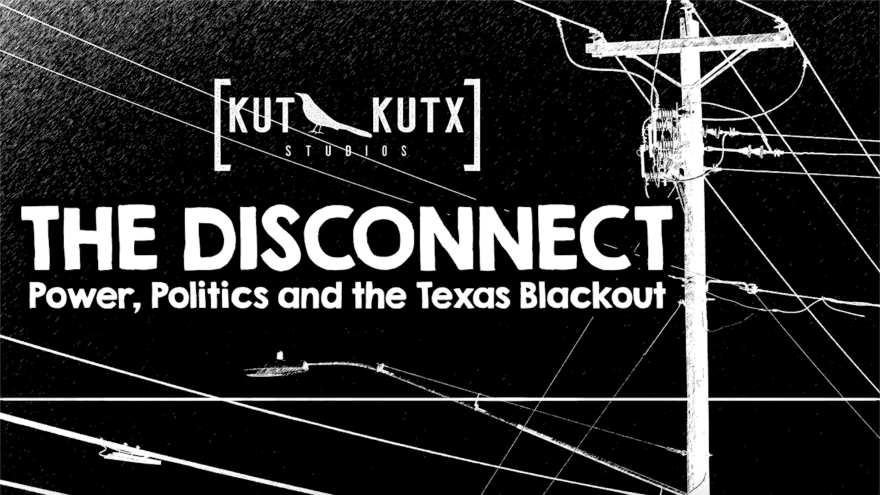Sandra Edwards was still dealing with damage from Hurricane Harvey, three years earlier, when the winter storm hit in February 2021.
Because of the damage, water seeped into her home in Houston's Fifth Ward and froze when the temperatures plunged.
"I had icicles from the inside of the house hanging down," Edwards, 56, said. “I stepped out the bed. I had ice on the floor. I wasn't aware of it, and I slipped and fell and I was laying there. I don't know how long I was unconscious. I was just laying there.”
Edwards woke up on the floor wet, cold and without power. The electricity returned four days later, but the damage to her home from two storms had mounted. Her monthly energy bills had also risen — effectively doubling this past spring to $198.
She was nearly speechless when she saw the first high bill; the second made her angry.
“My bill is usually like probably $98 — $100 if I use my [air] purifiers that much,” Edwards said.
And those bills are from the spring — not summer, when she runs her air conditioner. She’s not alone. Texas power customers are paying more for their electricity. So where does the money go and why would it cost more if it feels less reliable?Spread the wealth
You might think the energy grid runs on natural gas or wind power, coal or maybe uranium. But really, it runs on money.
In Texas, it was decided decades ago that market competition — the drive to make a buck — would dictate in large part what gets built on the grid and what doesn’t. It determines who sells power and who doesn’t, and — like it or not — who gets power and who doesn’t.
The 2021 blackout was the first time a lot of people realized just how financially complicated this whole thing is: a system powered by competing interests, each trying to win a bigger share of the money we put into it.
Edwards' bill is about $200. She lives in Houston, so she pays that to a retail electric provider (REP). In some parts of the state, you're going to pay your electric co-op or a city-owned utility. In Houston, Dallas and some other cities, however, customers buy power from a REP and agree to a set price per kilowatt hour for a period of time.
“Think of this as a middleman,” Ed Hirs, an energy economist at the University of Houston, said. “The guy on the corner selling roses. ... That's a middleman because they've had to buy the roses from the back of the truck out of the airport that came from somewhere in South America the day before.”
REPs don’t make the power, they’re just the storefront for customers to compare energy rates.
The REP takes a cut of Edwards' money and uses the rest to buy the power it promised her. We'll say $10 of her $200 bill stays with the REP and then that $190 takes the next step through the Electric Reliability Council of Texas, or ERCOT. (Note: These are easy-math-type estimates used as an example, not what is actually charged.)
It’s important to remember that ERCOT does not make electricity. This is like when you buy tickets to a concert. ERCOT is not Bon Jovi. ERCOT is not the arena. ERCOT in this analogy is Ticketmaster.
ERCOT is a marketplace, an air traffic controller and a nonprofit quasi-governmental entity all in one. It sets the price for the REP to contract with the power generator to buy the actual electricity. ERCOT takes a fee for this transaction, say another $10.
It’s important to remember that ERCOT does not make electricity. This is like when you buy tickets to a concert. ERCOT is not Bon Jovi. ERCOT is not the arena. ERCOT in this analogy is Ticketmaster.
Just like there are other places to buy concert tickets, there is another place a REP can buy power: The Intercontinental Exchange (ICE) is a market where, for a similar transaction fee, REPS can buy a contract to deliver energy for a set price.
The electricity has to be transmitted, and those power lines are owned by another company that will take another chunk of Edwards' money, say $20.
The next stop for Edwards' money is at the power generators: the solar and wind farms or natural gas plants that make the electricity. These folks get a big chunk of the bill, say $40.
The generators also have costs. Maybe they're paying off the cost of building a power plant. They've got a whole bunch of people they have to pay to run the thing. But most of all, they need fuel.
About half of the electricity supply in Texas comes from natural gas plants. The gas has to get to the plant via pipeline. Of the $120 left from Edwards' money, the pipeline will get paid a piece and then the natural gas company will also take a lot — especially with natural gas prices so high right now.
On all of those stops, the fuel source provider, the generator, the transmission companies, they all have to pay investors — a bunch of people in monocles and top hats who get handed $2 or $5 from Edwards' bill every month.
Just to complicate things a little bit more, maybe some of the money goes into a pension fund. A few cents of Edwards' bill might actually make it back to her if she has a pension or 401K or something like that.
Pass on the costs
Investors are putting the squeeze on the companies that they've invested in to give them better returns. The natural gas market is way up right now because of the war in Ukraine and other places. Natural gas companies are charging more because there are people willing to pay those prices. In Texas, there’s a lot of talk about energy independence, but it is beholden to world events no matter how much oil comes out of the ground here.
After the 2021 storm, the generators did the lion's share of reworking their facilities. The state said they had to weatherize power plants with extra insulation, for example, to make sure they can operate in the cold. That costs money.

ERCOT is under pressure from state regulators to keep the lights on and make things appear more stable — at whatever cost. Those changes that regulators put in place — basically having power plants available to run more often, creating that added energy capacity — cost $1 billion extra.
That higher cost is passed on in the wholesale price to the REP. And all those extra costs flow down to the person paying the bill: Edwards.
To keep all of this going, the investors, the fuel providers, the REPs, the generators, the transmission line people and even some ICE traders will all pay lobbying firms or politicians and political campaigns directly with a little bit of Edwards' money.
In turn, those lobbyists and politicians will pay extra attention to certain bills that make their way through Texas' legislative session every two years. So Edwards, and every other Texan, all pay a little bit more every month to keep the system going.
'I just wake up with a prayer'
Edwards' electricity was shut off last month because she couldn't pay the bills.
"I guess my number came up," she said.
A local nonprofit stepped in to get her power back on. It's covering her payments for another two months. After that, she's just not sure.
"I don't have no plans. I don't have anything anymore," she said. "I just wake up with a prayer. What's going to happen today?"
In July, the state put $50 million of federal money into a program to help people like Edwards with energy debts.
The money ran out in two weeks.
The Disconnect Season 2 is a project of The Texas Newsroom, the collaboration among NPR and the public radio stations in the state. It received support from FRONTLINE’s Local Journalism Initiative, which is funded by the John S. and James L. Knight Foundation and the Corporation for Public Broadcasting.

































